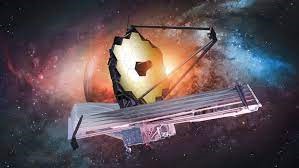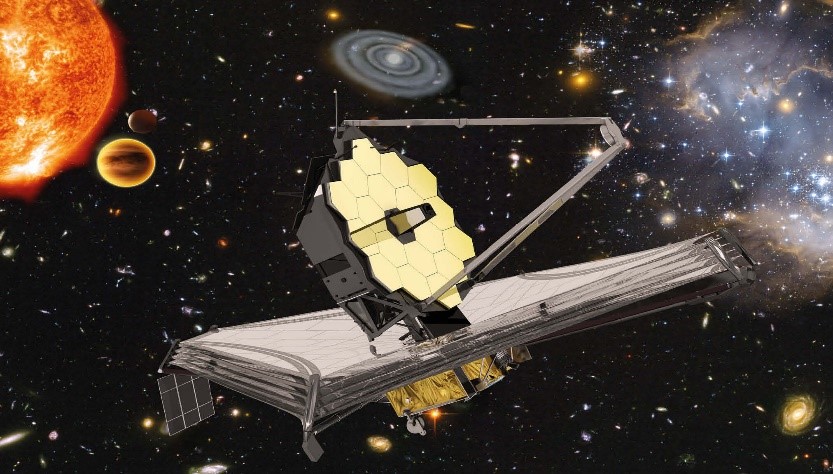Anticipated Discoveries and Future Impact
The James Webb Space Telescope (JWST) is on the brink of transforming our understanding of the cosmos and leaving an indelible mark on the field of astronomy. In this final part of the blog series, we'll explore the anticipated groundbreaking discoveries that the JWST is poised to make and the profound impact it will have on our knowledge of the universe and our place within it.

Figure 1. Anticipated Discoveries and Future Impact
1. Unveiling the First Galaxies:
Anticipated Discoveries and Future Impact is shown in Figure 1. One of the most eagerly awaited discoveries from the JWST is the observation of the universe's first galaxies. The telescope's infrared capabilities will allow it to peer through cosmic dust and capture the faint light emitted by these ancient structures. These observations could provide insights into the early stages of cosmic evolution and help answer questions about the formation and evolution of galaxies.
2. Birth of Stars and Planets:
The JWST's ability to penetrate dust clouds will enable it to study stellar nurseries in unprecedented detail. It will capture the birth of stars and the formation of planets, shedding light on the processes that lead to the creation of solar systems. These observations could provide crucial insights into our own solar system's origins and the potential for habitable planets elsewhere.
3. Exoplanet Atmospheres and Habitability:
By analyzing the atmospheres of exoplanets, the JWST could detect molecules like water vapor, carbon dioxide, and methane—signs of potentially habitable environments or even life. The telescope's observations may help identify Earth-like exoplanets and refine our understanding of conditions necessary for life to thrive beyond our solar system.
4. Insights into Dark Matter and Dark Energy:
The JWST's observations of distant galaxies and their motion could contribute to our understanding of the elusive dark matter and dark energy, which make up the majority of the universe's content. These observations could help refine models of the cosmos and provide clues about the fundamental nature of these mysterious components.
5. Revisiting Familiar Solar System Objects:
While its focus is on distant celestial bodies, the JWST will also revisit familiar objects within our solar system. It will provide detailed images and data of planets, moons, asteroids, and comets, enhancing our understanding of their compositions, geology, and dynamics.
Our solar system consists of our star, the Sun, and everything bound to it by gravity – the planets Mercury, Venus, Earth, Mars, Jupiter, Saturn, Uranus, and Neptune; dwarf planets such as Pluto; dozens of moons; and millions of asteroids, comets, and meteoroids. Beyond our own solar system, we have discovered thousands of planetary systems orbiting other stars in the Milky Way.[1]
6. Revolutionizing Astrophysics and Cosmology:
The JWST's groundbreaking observations are expected to revolutionize multiple fields of astrophysics and cosmology. Its data will lead to new discoveries, challenge existing theories, and inspire generations of scientists to explore the universe with fresh perspectives.
Space exploration has been a fascinating area of research and discovery for humanity. From the first man on the moon to the discovery of water on Mars, space exploration has captivated our imaginations for decades. With the launch of the James Webb Telescope (JWST), space exploration is set to enter a new era of discovery and innovation.
The James Webb Telescope is a revolutionary new space observatory that is set to replace the aging Hubble Space Telescope. With a mirror that is over six times larger than that of the Hubble telescope, the JWST is capable of capturing high-resolution images of the universe with unprecedented detail.
The JWST will be able to observe the universe in unprecedented detail, thanks to its ability to detect infrared light. Infrared light has longer wavelengths than visible light, which means it can penetrate dust clouds and other obscuring materials that visible light cannot.[2]
7. Inspiring Future Generations:
Beyond its scientific impact, the JWST has the potential to inspire and educate people around the world. Its stunning images and captivating discoveries could ignite the curiosity of young minds, encouraging them to pursue careers in science, technology, engineering, and mathematics (STEM) and fostering a deeper appreciation for the wonders of the cosmos.
7. Observing the Cosmos:
The primary mission of the JWST is to conduct a wide range of observations, capturing images and data across the infrared spectrum. It will focus on studying distant galaxies, star formation, exoplanets, and other celestial phenomena. The telescope's data will be transmitted back to Earth, where scientists and researchers will analyze it to make groundbreaking discoveries.
8. Legacy of Exploration:
The JWST's legacy will extend far into the future. Its data will be a treasure trove for astronomers, allowing them to conduct in-depth studies and make new breakthroughs for decades to come. The telescope's discoveries could shape the direction of future space missions and inform the development of new observational techniques and technologies.
In conclusion, the James Webb Space Telescope is poised to be a game-changer in the realm of astronomy. Its anticipated discoveries will reshape our understanding of the universe's origins, evolution, and potential for life. As it begins its mission, the JWST stands as a testament to human innovation, collaboration, and the unquenchable thirst for knowledge that drives us to explore the cosmos. Its impact on science, technology, and human imagination will reverberate for generations, leaving an enduring legacy of exploration and discovery.
References:
- https://solarsystem.nasa.gov/solar-system/our-solar-system/overview/
- https://www.jameswebbdiscovery.com/about/revolutionizing-space-exploration
Cite this article:
Gokula Nandhini K (2023), James Webb Space Telescope (JWST), AnaTechmaz, pp.5





